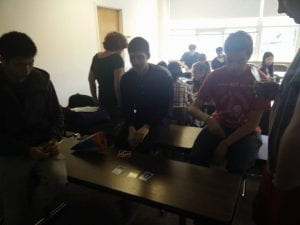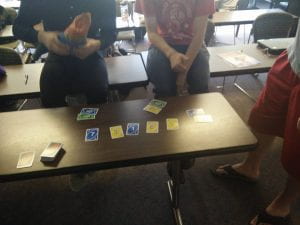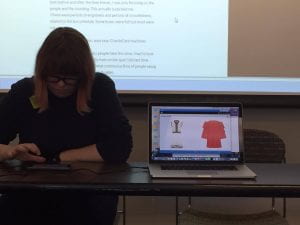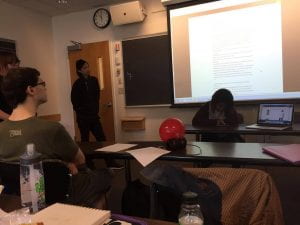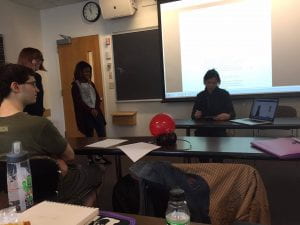Rules:
It’s a dangerous world out there. Injustices and inequalities have led to a never-ending global warfare. Ironically, the only place that is safe is the prison. For the sake of your own survival, you must try your best to make your way into the prison.
- Select two players to play the game and another moderator — total of 3
- Each is given a set of two cards, one with 10 different country flags, and another with 10 curse words from the respective countries (the words are jumbled up)
- Ask two players to engage in a meaningless back and forth argument for 60 seconds
- Moderator will determine who was winning the argument and that player will be the one to go first
- Player 1 will choose one of the 10 curse words to swear at Player 2
- Player 2 responds “where is that coming from?”
- Player 1 must attempt to guess which country the swear word is from and
- If correct, the moderator will cross off the word and country and the player will have earned the according prison sentence.
- If incorrect the turn ends and the other player may reuse the word and country.
- It’s now Player 2’s turn and repeat steps 5 – 7.
- Repeat step 8 until all words and countries have been crossed off.
- Tally up each player’s sentence and the player with the longer sentence wins the game.
Player cards
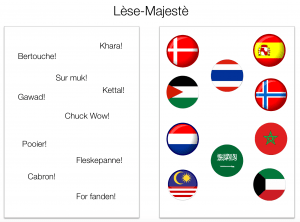
Prison sentences
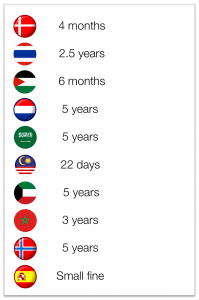
Artist Statement:
This was definitely the topic that I was looking forward to the most during this class. I have always been very interested in using seemingly very simple games or puzzles to reflect on a message. I think one of the biggest topics of 2016 has been the US presidential election, which is why I decided to pursue a very political piece.
The year has been a strange one, with President-elect Trump, in particular standing out as one of the most distinctive and usual candidates the country has witnessed. For the people who support him, he is the strong figure that will “make America great again.” For his protestors, he is disrespectful and “unpresidential.”
Other major concerns are the potential risks and unrest that Trump’s win may cause for the rest of the world; given that Trump has made multiple promises to drastically shift the terms of alliances and relationships with the world.
So I thought to myself, what if the worst happened, and nowhere in the world could be considered a safe place? What if in this world, in order to survive, one must be radical and occasionally offensive just to survive? What would an experience like this feel?
I must admit that I’m not an avid player of any games, whether it’s indie games or video games. I didn’t have a lot of previous experience to draw upon, but I was very inspired by our 2nd guest lecturer’s games that we play tested. In particular, her game/puzzle with linking ingredients to making drinks and leading to word combinations was very interesting. The notion of taking the unknown and delivering a pleasant surprise was very inspiring to me. I decided to take a similar format and turn it into a 2 player game as I thought curse words require a subject and also an emotional investment.
Class thoughts:
For me personally, as a graduating student this December, this was one the most interesting electives I have taken in my time at Northeastern. If I’m not mistaken, I am the only Business Major in the class.
I came into the class very worried about the art or computer science skills that may have been required or expected. However, I was very pleasantly surprised to find that this class has “no right answer.” All of our projects have been about interpretation, which allowed me to be very creative in a way that my usual business classes don’t encourage.
From the Score to the Appropriation, and to the Intervention; I thought that I tackled each project with more confidence and knowledge. Overall, I’m very proud of my own learning outcomes in the class and I will definitely spread the word among my business classmates that are looking for electives!




